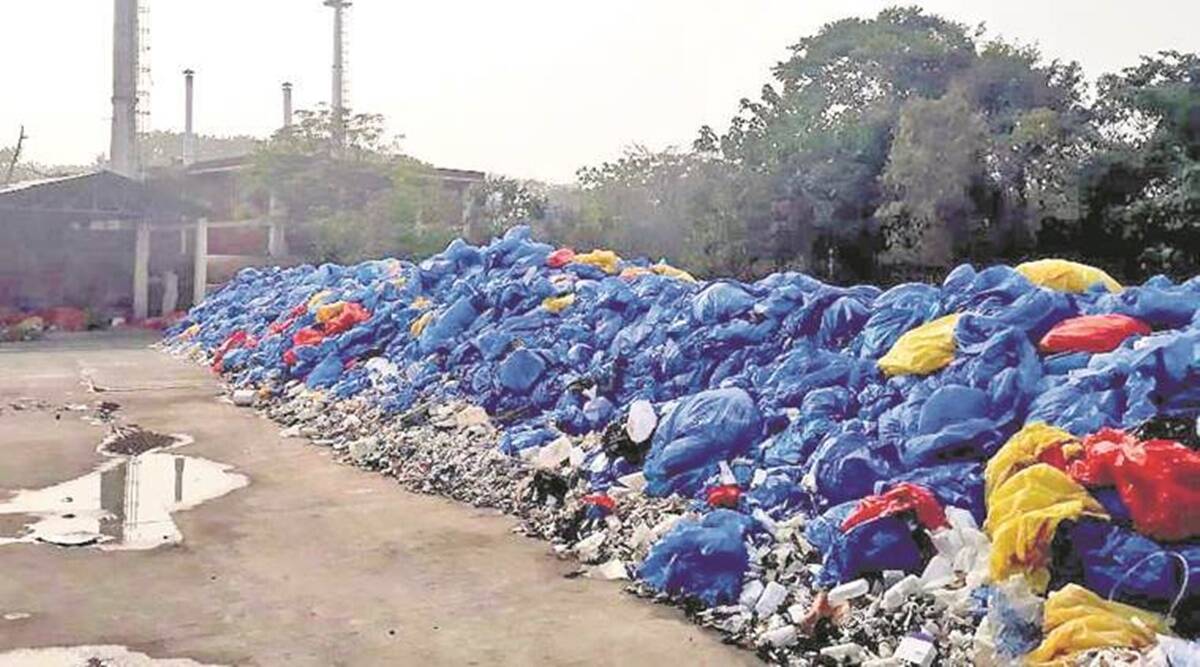Support India in addressing the disposal of bio-medical waste generated because of COVID-19.
What is bio-medical waste?
Biomedical waste is a waste produced during the diagnosis, treatment or immunisation of human or animal research activities. The three stages involved in Biomedical Waste Management (BWM) are:
1. Collection and Separation
2. Transportation to respective facilities
3. Proper treatment and disposal
Everybody knows well that India is topping the list of the most recorded COVID-19 cases in a day. This pandemic has also burdened our waste management system by increasing biomedical waste. The constant challenge because of this viral outbreak that India is facing is the management of these wastes. The biomedical waste produced by the hospitals, nursing homes, health centres and households used for self-isolation is substantially increasing. These wastes include PPE (Personal Protective Equipment) kits, masks, shoe covers, gloves, human tissues, items contaminated with blood, body fluids like dressings, plaster casts, cotton swabs, bedding contaminated with body fluid, blood bags, needles, syringes, etc. If the biomedical waste remains mismanaged, it will cause damage not only to the environment but also to human health.
Before the covid-19 pandemic, the biomedical waste generation in India was at 610MT per day. As per the report, India generated 33,000 tonnes of COVID-19 biomedical waste by January 2021.
It would be still early to have exact figures of the biomedical waste, but by some estimates, it has increased six-fold compared to pre-Covid-19 times. A report jointly prepared by Associated Chambers of Commerce and Industry of India (ASSOCHAM) and Velocity in 2018, states that the total quantity of medical waste generated in India (in 2018) was 550 TPD, and these figures are expected to increase close to 775.5 TPD by 2022. But if we look at this data and add to them, the waste generated now; the situation is more challenging and may worsen in the future.
The improper disposal of these wastes is certainly risky for the lives of sanitation workers who work without being trained for handling such hazardous materials. To prevent the spread of coronavirus the Ministry of Health and Family Welfare (MoH&FW) released guidelines on the use of masks by the public and also prescribed the manner of its disposal. According to MoH&FW, the used masks must be disinfected by using an ordinary bleach solution (5%) or sodium hypochlorite solution (1%) and then it should be disposed of either by burning or deep burial.
The Central Pollution Control Board issued some guidelines for biomedical waste disposal which each one of us needs to follow. The guidelines are:
- The masks and gloves used by people other than COVID-19 patients should be cut and kept in paper bags for a minimum of 72 hours before disposing and the same rule applies for PPE kits as well.
- The people who are home-quarantine should separate their COVID-19 related waste that includes tissues, cotton swabs, masks and other waste into a yellow bag.
Similarly, hospitals and nursing homes must segregate the waste as per the guidelines issued by the Ministry of Housing and Urban Affairs.
- CFL bulbs, LED, tube light and glassware used during quarantine are to be kept in a cardboard box marked blue. This waste will be disinfected and sent for recycling.
- Red bins are to be used for eye protection goggles, pens, plastic water bottles, and bedsheets. To disinfect this type of waste autoclave or microwave or hydro clave will be used and thereafter sent for recycling.
- Used gloves, PPE kits, shoe covers, head covers, disposable sheets to be discarded in a yellow bin. This waste needs to be incinerated or buried deeply.
- Metals to be put in white bins. Before using it for any treatment, sterilisation followed by shredding or container mutilation or encapsulation must be there.
Written By: Harshita Sinha

